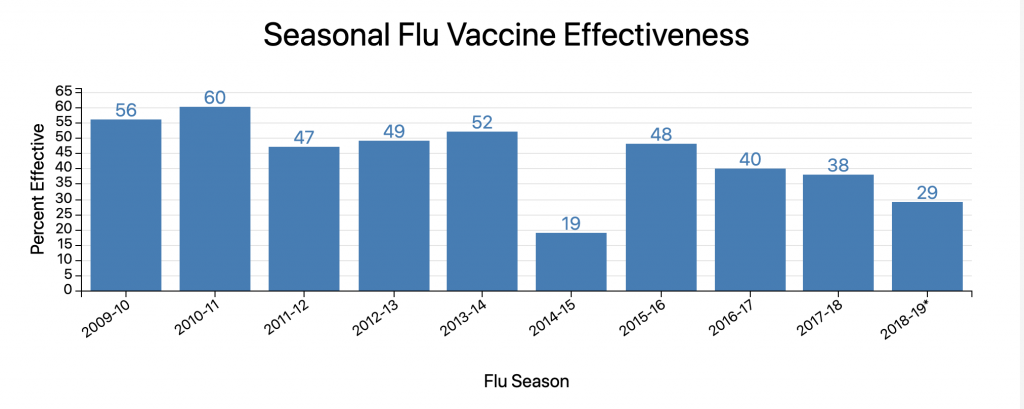If you had the flu in 2017, you know what the influenza A H3N2 virus feels like. Australia had a bad round of H3N2 flu this year and often the Northern Hemisphere follows the same trend.
What to do? Get the flu shot!
So many people say that they get the flu shot but still get the flu. It is true that the vaccine has only a 40 to 60 percent effectiveness on average. In fact, as you can see in this chart, some years effectiveness has been even lower.
But, if you get the flu shot, you are still much less likely to get the flu as badly or to get pneumonia which happens with very bad strains. There are a range of studies that include reduced rates of hospitalizations in children and adults who have had the vaccine as well as studies that the vaccine lowers the risk of cardiac events during the flu season. For women who are pregnant, the flu vaccine reduces their risk and the antibodies their bodies produced are passed on to their babies, giving their newborns added protection against the flu virus. (See more benefits on this page by the CDC).
One of the reasons for lower effectiveness is the constant changes that the flu virus makes. It is a tricky virus that can change even during the flu season. Another problem has been that much of the flu vaccine is grown in eggs where the strain influenza A H3N2 tends to change more frequently as it is being produced.
To remedy the problem with egg grown vaccine, this year’s vaccine has been grown in animal cells. These cell derived are less likely to experience egg-adapted changes.
Vaccines Protect Others
One of the reasons to get a vaccine is that it protects people who can’t take the vaccine. Those who are allergic to components of the vaccine and infants under 6 months of age cannot take the vaccine.
Here is a helpful video on how to stay healthy in the office.
My family has gotten their shot and it is on my to-do list for today!






